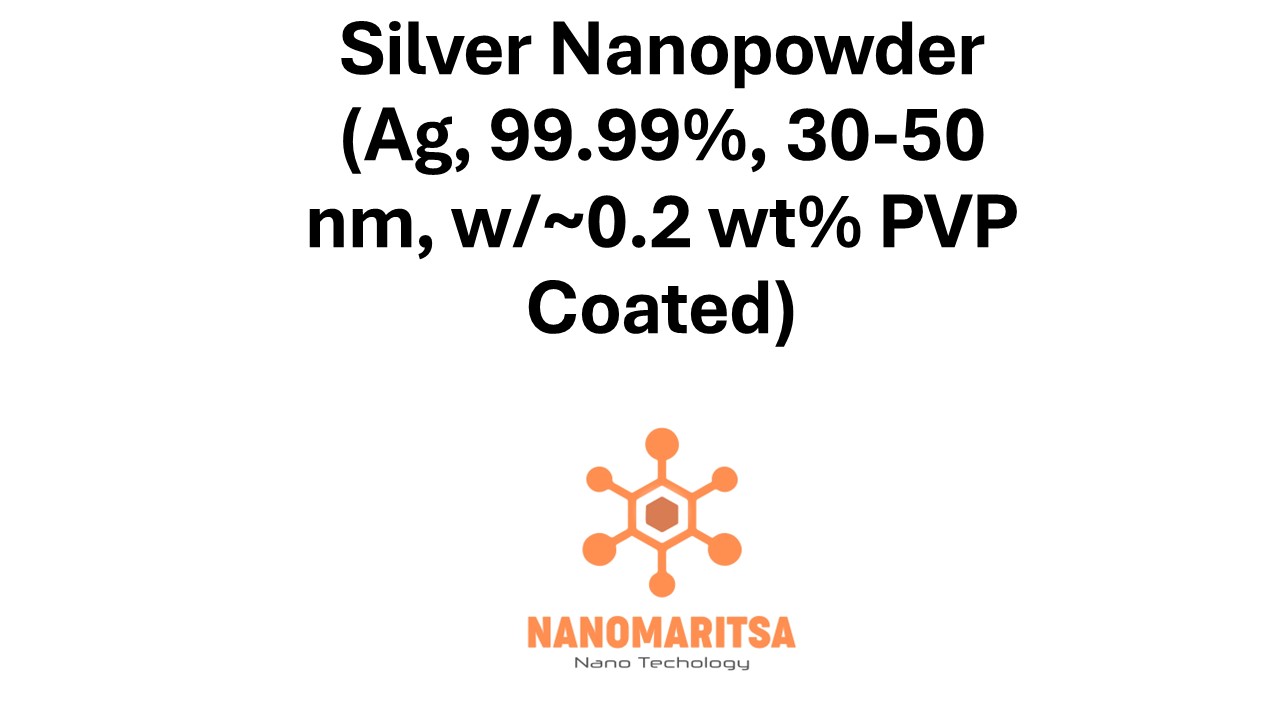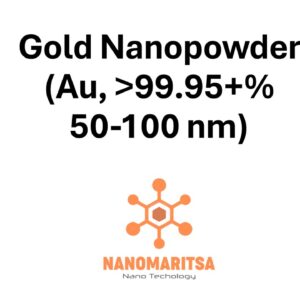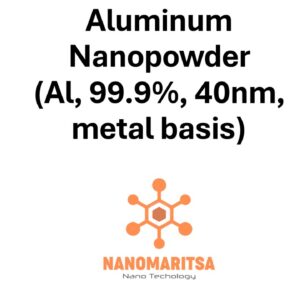Silver Nanopowder (Ag, 99.99%, 30-50 nm, w/~0.2 wt% PVP Coated) is a high-purity silver nanopowder with a particle size range of 30-50 nanometers (nm), which is coated with polyvinylpyrrolidone (PVP), a stabilizing agent. The PVP coating prevents the nanoparticles from aggregating, ensuring the particles remain evenly dispersed in solution or other mediums. Here’s a detailed breakdown:
1. Key Features:
- Silver (Ag): The primary material is silver, known for its excellent electrical conductivity, thermal conductivity, antimicrobial properties, and catalytic activity. Silver nanoparticles possess unique properties due to their small size, such as increased reactivity and high surface area.
- Purity (99.99%): The 99.99% purity indicates that the silver nanopowder has a very low level of impurities, ensuring high performance and minimal contamination, especially in sensitive applications.
- Nanoparticle Size (30-50 nm): The 30-50 nm particle size range offers a balance between high surface area and ease of dispersion. At this size, silver nanoparticles exhibit enhanced chemical and physical properties, such as better catalytic efficiency and antimicrobial activity.
- PVP Coating (~0.2 wt%): The nanopowder is coated with polyvinylpyrrolidone (PVP), a polymer that serves as a stabilizing agent. The ~0.2 wt% PVP coating helps prevent aggregation of the nanoparticles and ensures they remain well-dispersed in solutions, improving their usability in various applications.
2. Properties:
- Increased Surface Area and Reactivity: The 30-50 nm size provides a high surface-to-volume ratio, enhancing the chemical reactivity of the silver nanoparticles. This increased reactivity makes them ideal for use in applications such as catalysis and antimicrobial treatments.
- High Stability: The PVP coating stabilizes the nanoparticles, preventing them from clumping or aggregating. This ensures that the particles stay uniformly distributed in solvents, maintaining their individual properties and effectiveness.
- Electrical Conductivity: Silver is an excellent conductor of electricity, and the nanoparticles retain this property. This makes them suitable for use in conductive inks, films, and electronic devices that require high electrical conductivity.
- Antimicrobial Activity: Silver nanoparticles are known for their antimicrobial properties, which are maintained even in their nanoparticle form. The powder is effective in preventing bacterial growth, making it useful in medical devices, wound care, and antimicrobial coatings.
- Catalytic Properties: Due to their increased surface area, the silver nanoparticles exhibit enhanced catalytic activity, which is beneficial in chemical reactions, fuel cells, and environmental applications.
3. Applications:
- Electronics: The conductivity of silver nanoparticles makes them ideal for use in printed electronics, conductive inks, and electronic components such as flexible circuits and sensors.
- Antimicrobial Coatings: The antimicrobial properties of silver nanoparticles are widely used in medical devices, wound care products, textiles, and surface coatings to reduce microbial growth and prevent infections.
- Catalysis: Due to their high surface area and reactivity, silver nanoparticles are used in catalytic processes such as chemical synthesis, environmental remediation, and fuel cell technology.
- Sensors: Silver nanoparticles are employed in sensor applications, where their high reactivity allows them to detect gases, chemicals, or biological agents.
- Coatings: The nanoparticles are used in coatings for various surfaces to provide conductivity and antimicrobial properties, making them useful in industries such as healthcare, automotive, and manufacturing.
4. Handling and Safety:
- Toxicity and Health Hazards: While silver itself is generally considered safe, silver nanoparticles can pose unique health risks if not handled properly. These risks include inhalation or ingestion of the fine particles, which may lead to respiratory or other health issues. Proper handling with personal protective equipment (PPE), such as gloves, goggles, and face masks, is essential.
- Storage: The silver nanopowder should be stored in a cool, dry, and well-ventilated area to avoid oxidation or contamination. It should be kept in tightly sealed containers to protect it from moisture and environmental factors that could lead to particle agglomeration or degradation.
- Precautions: Silver nanopowder should be handled in a controlled environment, such as a fume hood, to minimize exposure to airborne particles. Appropriate disposal procedures should be followed to minimize environmental impact.
Summary:
Silver Nanopowder (Ag, 99.99%, 30-50 nm, w/~0.2 wt% PVP Coated) is a high-purity silver nanopowder that combines the excellent properties of silver with the stabilizing benefits of a PVP coating. The small particle size provides enhanced reactivity and surface area, making it suitable for a wide range of applications, including electronics, catalysis, antimicrobial coatings, and sensors. The PVP coating helps maintain the dispersion and stability of the nanoparticles, preventing aggregation and ensuring uniform performance. As with all nanomaterials, it is important to handle the nanopowder with care and follow safety guidelines to avoid potential risks.
| Measurement (gr) | 5 grams, 25 grams, 100 grams |
|---|






